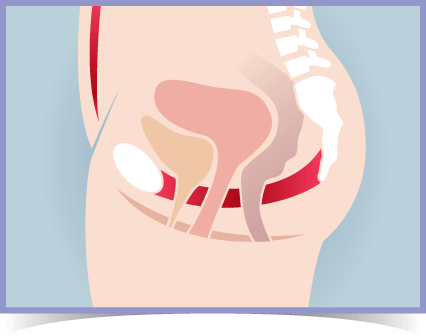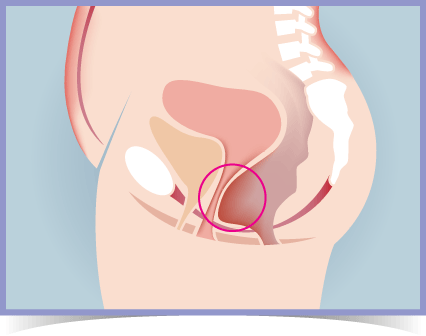Rectal Prolapse and Rectocele - What's the difference?
- Rectal prolapse is where the walls of the rectum protrude through the anus
- Rectocele is where the rectum protrudes into the vagina.
Rectal Prolapse
A Rectal prolapse occurs when the connective tissues within the rectal mucosa loosen and stretch, allowing the tissue to protrude through the anus. As the rectum becomes more prolapsed, ligaments and muscles may weaken until the rectum protrudes out of the body through the anus. This stage is called complete prolapse, or full-thickness rectal prolapse. Initially, the rectum may protrude and retract depending on the person's movements and activities; if the condition remains untreated it may protrude permanently.
Did you know? Women, men and children can suffer rectal prolapse.
What causes Rectal Prolapse?
- Straining because of constipation.
- Tissue damage due following surgery or childbirth.
- Weak pelvic floor muscles.
What are the signs?
- Faecal incontinence or leaking stools.
- Leaking mucus or blood from the anus.
- Full bowel feeling and an urgent need to go.
- Passing many small stools.
- A feeling of incomplete bowel emptying.
- Anal irritation including pain, itching and bleeding.
- Red tissue that extends out of the anus.
What can be done?
- Avoid constipation. Simple changes can improve or reverse a partial prolapse.
- You can push the prolapse into place - if your doctor says it is okay
- Do Kegel exercises to help strengthen the muscles of the pelvic area.
- Don't strain, especially while having a bowel movement.
- Surgery
Rectocele / Proctocele
If you have a rectocele you are more prone to developing a cystocele (bladder prolapse) you must strengthen your pelvic floor with Kegel exercises whether you have surgery or not!
When the front wall of the rectum bulges into the vagina it is known as a Rectocele or a Proctocele. This is due to weakening of the pelvic floor and thinning of the tissues separating the rectum from the vagina (rectovaginal septum).
Healthy Pelvic Floor

Example of a Rectocele

What causes a Rectocele?
- Difficult childbirth, including prolonged deliveries and forceps deliveries.
- Perineal tears or an episiotomy into the rectum or anal sphincter muscles.
- Hysterectomy.
- Constipation and straining with bowel movements.
- Weak pelvic floor muscles.
What are the signs?
- A lump or bulge into the vagina.
- Painful lovemaking.
- Constipation and the frequent urge to have a bowel movement.
- Difficulty in defecating.
What can be done?
- Do Kegel exercise with a Kegel8 Ultra 20 Pelvic Toner to help strengthen the muscles of the pelvic area.
- Avoid constipation. Simple changes can improve or reverse a partial prolapse.
- A vaginal pessary may support the pelvic organs.
- Surgery.





